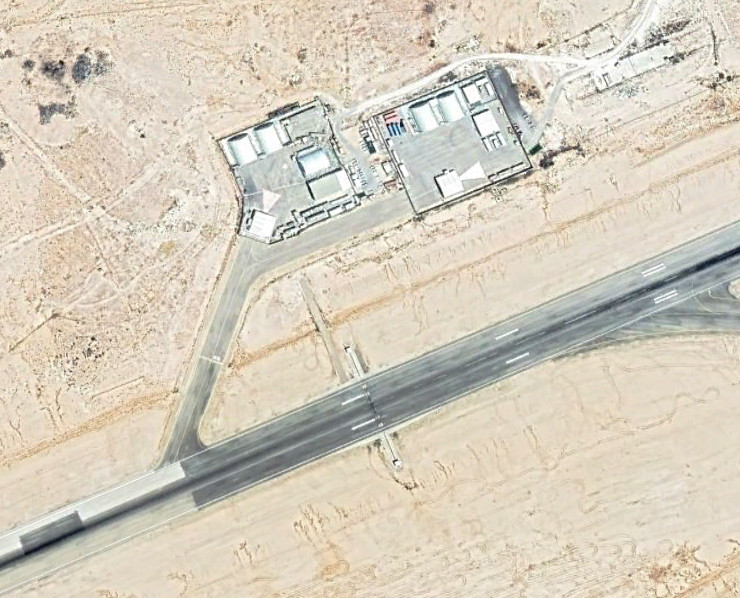
The Existence Of Israel’s Secret Stealth Drone Should Come As No Surprise
The apparent existence of such an aircraft points to a highly logical capability requirement, especially in regard to Israel's long stand-off with Iran.
Joseph Trevithick Posted on Oct 22, 2024 The War Zone
The existence of a secret Israeli drone, referred to as RA-01 and used for covert missions, has emerged from an unauthorized disclosure of U.S. intelligence documents which have now been posted all over social media. Israel’s possession of at least a pocket fleet of long-range stealth drones capable of gathering intelligence and possibly conducting strikes is extremely logical to the point of it being a bit odd if they never pursued such a capability. Israel is home to an extensive and often pioneering uncrewed aviation industry and drones of this kind would be very well suited to supporting the country’s ongoing stand-off with Iran. During a major Israeli operation to strike targets in that country, they would likely play an indispensable role, as well.
Mention of RA-01 is found in classified documents from the U.S. National Geospatial-Intelligence Agency (NGA), the authenticity of which U.S. officials have not disputed and that first emerged online last week via a pro-Iran channel on the Telegram social network. An investigation into whether this unapproved release was the product of a hack or a leak is ongoing. The documents could still be disinformation or feature inaccurate info by design, so we cannot indepedently confirm their authenticity, but at this time, there is no indication that they are not legitimate and there are many indications that they are.
The NGA documents center on observations from October 15-16 of an Israeli Air Force (IAF) large force exercise, which is viewed as part of preparations for retaliation primarily for Iran’s ballistic missile barrage at the beginning of this month. In addition to talk about RA-01, there is a discussion about Israel’s air-launched ballistic missile capabilities, including Rocks and the previously undisclosed Golden Horizon, which have been employed in previous Israeli retaliatory strikes on Iran, as you can read more about here. There is also talk of Israel’s nuclear arsenal, which the country has never publicly acknowledged, and that NGA does not expect to be used in any near-term operations against Iran, as well.
When it comes to the RA-01, no details are provided about its design or capabilities, or the size of the fleet, in the NGA documents. What significance the RA-01 nomenclature might have is unknown. “RA” could imply a reconnaissance and attack capability. Its basic structure is also in line with alpha-numeric designations Israel Aircraft Industries (IAI) has used for drone designs in the past. The designation could be one the U.S. Intelligence Community uses internally to refer to this platform and that does not reflect in any way what the Israelis call it, as well. One of the NGA documents also refers to the Rocks air-launched ballistic missile as the IS02, which could also be another internal U.S. designation.
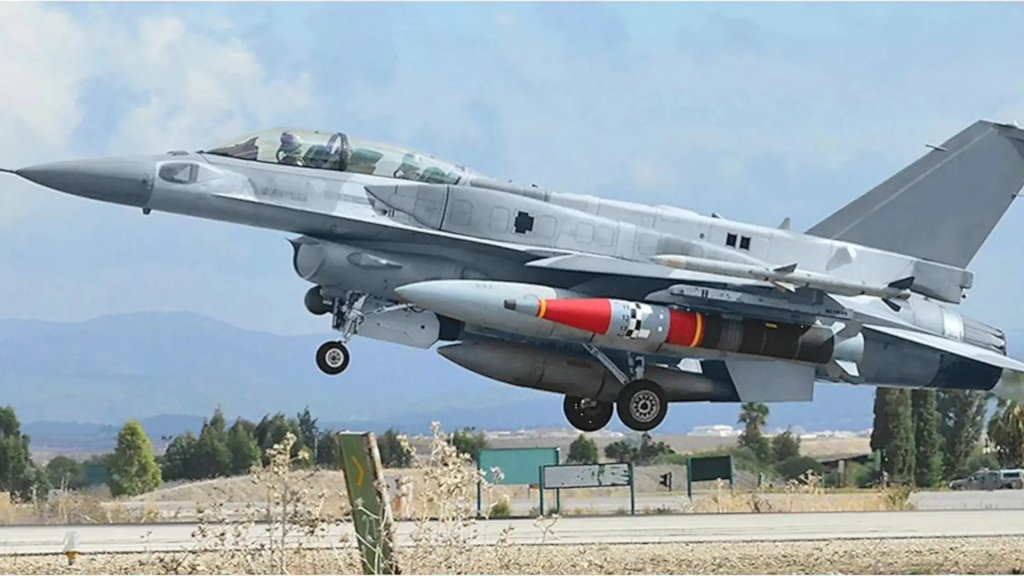
NGA’s report also does not say any RA-01s were actually observed, just that there were signs that they were operating during the period in question from a restricted area at Ramon Airbase in the Negev desert in southern Israel. Ramon, which was among the targets of Iran’s missile and drone attacks on Israel back in April, primarily hosts F-16I Sufa fighters and AH-64 attack helicopters, but has also been home to various secretive and specialized units over the years.
Experts and observers have already identified a pair of secluded fence-off areas at the northeastern end of Ramon with shared direct access to one of the base’s two runways, which could house the RA-01s.
Work on this segregated area of the base dates back to at least the 2007-2008 timeframe from what can seen in available satellite imagery. A significant redevelopment and expansion of this section, including the construction of an entirely new taxiway, more hangars, and other facilities, occurred in the mid-2010s.

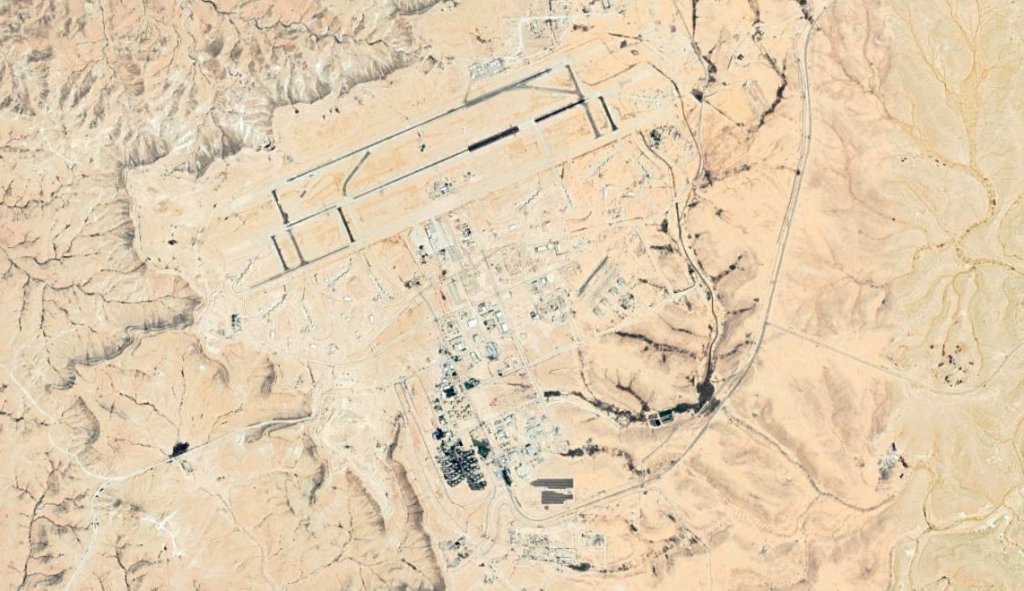
Each of the current fenced-off areas has a pair of semi-circular hangars that are approximately 80 feet long and 64 feet wide. One of the sections also has a rectangular hangar, which dates back to the original construction in this part of the base, and that is some 120 feet long and 60 feet wide. Both areas have 70-foot by 70-foot open-ended sunshade-style enclosures leading to the shared taxiway, which is just over 70 feet wide. This might point to the maximum length of the RA-01’s wingspan.
White triangles painted on the tarmac extending to one side of both of the sunshades look to be engine backblast warning areas, which could point to jet propulsion. This also points to these structures being scoot-and-hide shelters where ground personnel can load munitions and other stores, as well as conduct various other kinds of last-minute checks, away from prying eyes, including satellites above.
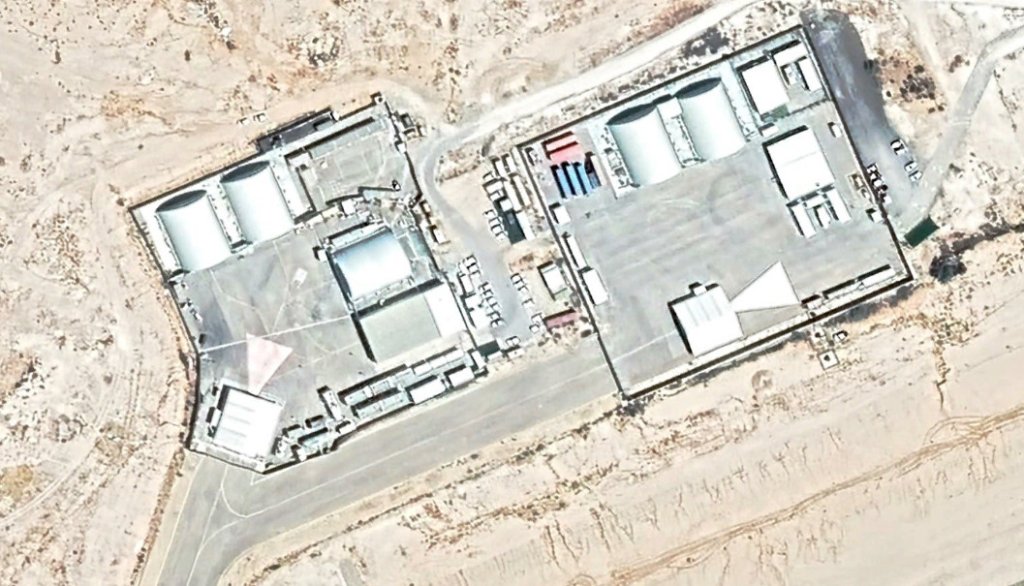
The presence of two distinct fenced-off areas may also point to one or more other secretive drone types being housed in this part of Ramon Airbase beyond the RA-01s. This, in turn, could mean the hangar and taxiway dimensions, as well as the triangles on the tarmac, and not reflective of the RA-01’s design, at least exclusively. Hangars can be used to hold multiple assets at once, too. The possibility remains that the RA-01s operate from elsewhere within the base, as well, and these facilities are used for other platforms entirely.
It is worth noting in this context that U.S. drones designed for covert and clandestine missions, including ones deep inside denied areas, dating back to the height of the Cold War and that have now emerged into the light, range widely in size, complexity and configuration. Prominent examples of this diversity of designs (and specific intended mission profiles) include the stealthy flying wing RQ-170 Sentinel and the RQ-29, a converted civilian light sport aircraft.
As noted earlier, Israel’s aerospace sector has an established history of pioneering uncrewed aviation developments. Furthermore, though Israeli companies have not publicly demonstrated a flying stealth aircraft, crewed or uncrewed, it should be within their technical grasp. IAI, specifically, is known to have reached at least the wind tunnel testing phase of development on one high-altitude long-endurance drone concept with radar and infrared signature-reducing features, called the HA-10, in the 1990s. The HA-10 has been linked to the Israeli Boost Intercept System (IBIS) missile defense project, which envisioned a missile-armed drone to shoot down enemy ballistic missiles in their initial boost phase of flight.
“The UAV [uncrewed air vehicle] would have cruised at between 7 and 15 km [approximately 23,000 to 49,000 feet] altitude, and would carry an IRST [infrared search and track system], laser range-finder, datalinks and two to four [Python-series air-to-air] missiles,” according to an archived digital edition of Jane’s Strategic Weapon Systems from 2002. “HA-10 was designed with low IR and radar signatures, and was planned to loiter for up to 24 hours on station with a payload of 1,000 kg [approximately 2,200 pounds].”

A paper that members of IAI presented at the 24th International Congress of the Aeronautical Sciences in 2004 describes the HA-10 as one of “a number of additional high altitude advanced configurations” the company had previously examined “within the framework of the advanced design activity.” IAI’s “HA” series does also include another non-stealthy design, the HA-13, that the company proposed together with TRW in the United States to meet the U.S. Air Force’s Tier II+ drone requirements that ultimately led to the fielding of the Global Hawk.
The possibility that the RA-01 is close in form and/or function to something like the HA-10 or the RQ-170, or even to a flying wing UCAV, would align well with the other details about the large force IAF exercise, as well as Israel’s general operational considerations, especially with regard to Iran. Though the current Iranian regime is prone to sometimes absurd hyperbole, it has air defense capabilities that present real threats. Iran’s shootdown of a U.S. Navy RQ-4 drone over the Strait of Hormuz in 2019 prompted notable discussions about the survivability of non-stealthy uncrewed aircraft in future conflicts that have had clear impacts on subsequent U.S. military planning. The RQ-170 has also notably been sent over Iran in the past, with authorities there recovering a largely intact example that went down inside the country in 2011.
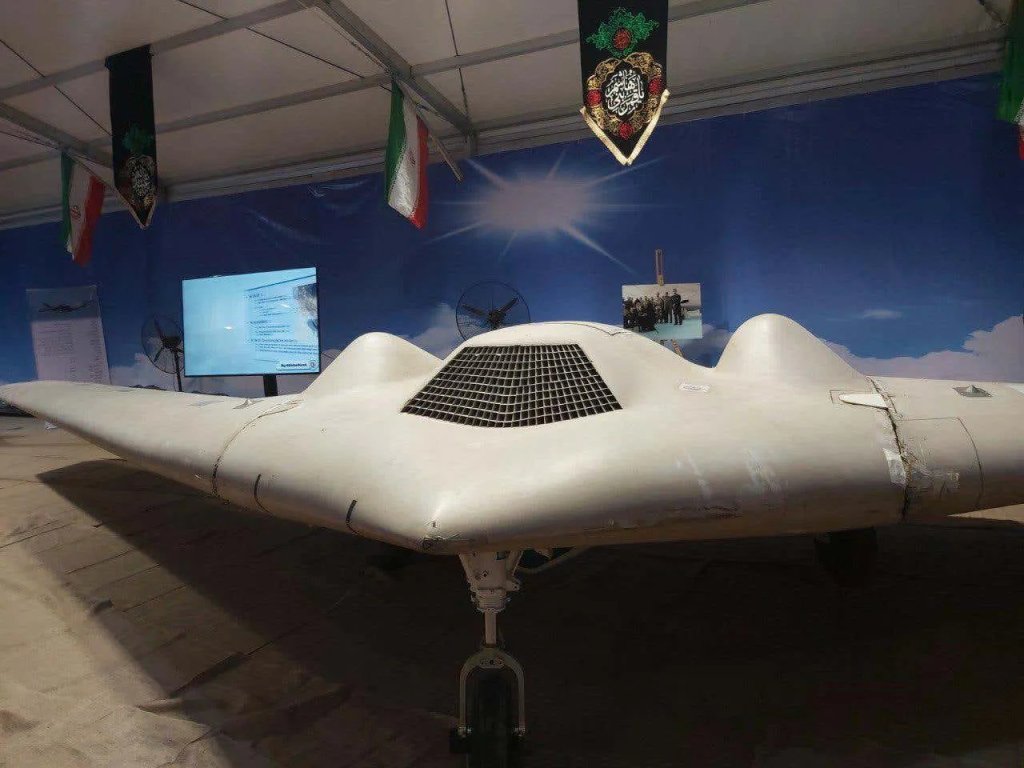
It is also interesting to note here that initial work on the segregated section at Ramon airbase in the late 2000s came at a time when concerns about Iran getting more capable S-300 surface-to-air missile systems from Russia were growing. Those same concerns reportedly helped drive the IAF’s decision to purchase F-35 stealth fighters. Iran also finally sealed the deal to acquire S-300s around the time that the work was being done to revamp and expand the fenced-off areas of Ramon.
The construction of the initial segregated portion of Ramon also came around the time, broadly speaking, of Israel’s covert 2007 strike on a secret nuclear reactor in Syria that Bashar Al Assad’s regime had built with help from North Korea. F-16Is from Ramon were among the aircraft involved in that operation. The Syrian armed forces also have an air defense network that presents real threats, as exemplified by the shootdown of an Israeli F-16 in 2018.
Other incidents over the years, including strikes against Iranian-backed militias in Iraq in 2019, have raised questions about possible secret Israeli drone capabilities. Advanced uncrewed aircraft operated by Israel and others might also, in part, help explain claimed incidents involving unexplained aerial objects over Iran in recent decades, which also often come with reports of heavy electronic attacks on perusing fighters and radar stations.
Overall, for Israel, with its long and still expanding history of very long range and often covert and/or clandestine strikes on high-value targets in foreign countries, a drone just having the ability to persistently surveil far-flung and denied areas would be of great value. Stealthy uncrewed aircraft capable of conducting intelligence, surveillance, and reconnaissance (ISR) missions could also provide important pre and post-strike intelligence.
A penetrating uncrewed ISR platform could also help provide early warning about potential threats and otherwise monitor areas of interest, all with a lower chance of an opponent like Iran even detecting their presence. As The War Zone has highlighted in the past, persistent surveillance that can help establish so-called ‘patterns of life’ in a target area from which various kinds of useful intelligence can be gleaned. Doing this while deep in denied airspace without the enemy even knowing they are being watched can result in much higher-fidelity intelligence products.
As relevant examples, the RQ-170 reportedly helped keep tabs on Osama Bin Laden’s compound in Pakistan before and during the U.S. raid that led to his death and the U.S. Air Force has at least explored using the Sentinel to help with bomb damage assessment. In the latter case, a test was conducted involving an RQ-170 assessing the impact of a GBU-57/B Massive Ordnance Penetrator (MOP) bunker buster, a weapon specifically designed to be employed against deeply buried facilities like those housing much of Iran’s nuclear infrastructure.
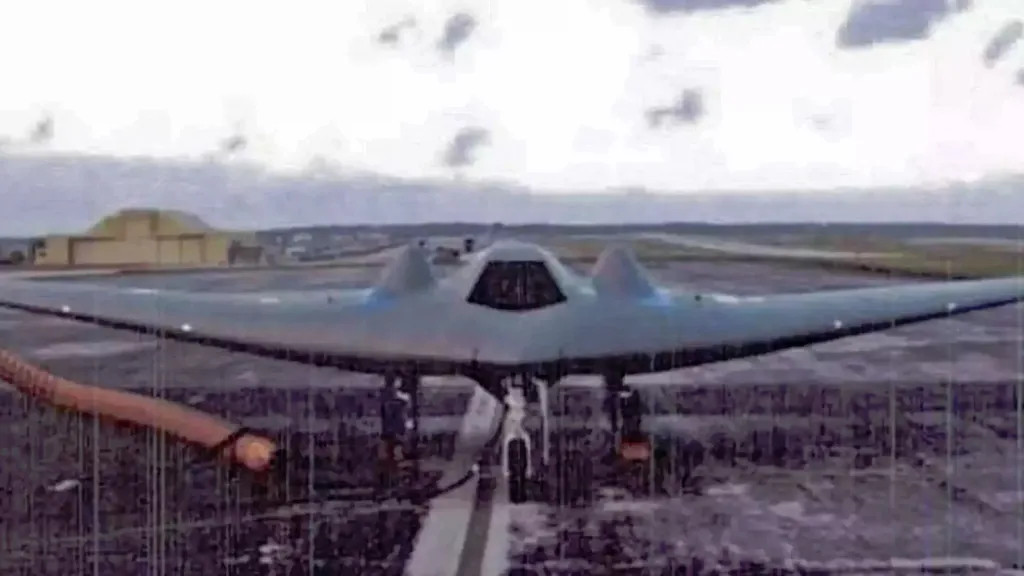
There is also a question to be raised here about whether Israel might be a partner of some kind when it comes to the RQ-170 and/or related developments. The Sentinel has had its own role in keeping tabs on Iranian, North Korean, and Pakistani nuclear and ballistic missile programs.
A true stealthy UCAV capable of prosecuting long-range kinetic strikes or launching non-kinetic attacks (such as electronic or cyber warfare ones) would give Israel further options for targeting high-value assets and penetrating into densely defended areas to get to them, as well as doing so in covert and clandestine ways. Even just having the ability to deliver a small munition for a ‘hammer toss’ against a singular high-value target would be a major capability for a platform of this kind.
In addition, UCAVs typically have combat radii that are multiple times greater than that of a fighter. For Israel, this could enable them to conduct entire missions into Iran and back without any need to refuel in mid-air. The IAF has notably limited aerial refueling capabilities to support long-range penetrating missions by its known crewed combat aircraft fleets. Israel does also have means of conducting long-range stand-off strikes, including with air-launched ballistic missiles like Rocks.
The War Zone has reported in detail in the past how there is evidence of the U.S. military and/or the U.S. Intelligence maintaining a pocket fleet of stealthy General Atomics Avenger drones for the same kinds of reasons.
In many ways, it is surprising that evidence like this that could point to an Israeli force of stealthy drones, and possibly UCAVs, has not emerged before now. The absence of such a capability within the Israel Defense Forces (IDF) would be equally curious in much the same way that it is odd that the U.S. military has abandoned interest, at least publicly, in stealthy flying wing UCAVs. The continues to be substantial work on developing and fielding UCAVs elsewhere in the world, from France to Turkey to Russia to India. China has made especially significant strides in this field in recent years.
So, while these documents certainly do offer some insights into what was previously an unconfirmed capability, their contents should be of little surprise⍐.






No comments:
Post a Comment